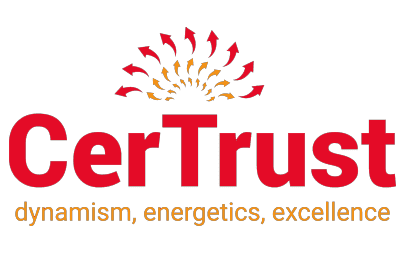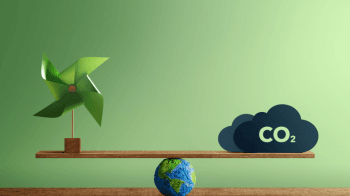In recent years, the decarbonization of energy and industry has been driven by the EU Emissions Trading System (EU ETS), which assigns a price to CO2 emissions. The EU has now agreed to establish a similar program for the transportation and heating sectors.
The ETS has been long viewed as an ineffective tool due to low pricing for CO2 allowances. However, prices have increased in recent years, motivating businesses to decrease their use of fossil fuels. The system tightened as part of the Fit for 55 package, which includes laws aimed at achieving the new climate objective of a 55 percent reduction in emissions by 2030. This factsheet outlines the goals of the ETS, as well as its early challenges and the most recent modifications brought on by the Fit for 55 package.
The EU ETS is a market mechanism that places a price on CO2, thus providing an incentive to reduce emissions. The goal is to cut back by a specific percentage each year in the power generation and energy-intensive businesses. Between 2005 and 2021, the system contributed to the reduction of around 35% in emissions in these industries.
Companies under the program are required to purchase or receive allowances equal to their CO2 emissions. This increases not only the cost of electricity production from coal and other fossil fuel but also the appeal of clean energy resources.
The EU ETS has a cap-and-trade strategy: the EU sets an annual emission limit on CO2 and requires businesses to hold a European Emission Allowance (EUA) for each tonne of CO2 they emit in a given year. They can purchase or trade the permissions they acquire.
The EU ETS covers CO2 emissions from power plants, energy-intensive heavy industry, and civil aviation. A specific number of free emissions allowances are provided to heavy industry, helping it to compete with companies operating outside the EU that are subject to less onerous environmental regulations.
Companies incur a punishment if they emit more CO2 than they have covered by emission allowances. The fine is 100 euros per excess tonne. Therefore, businesses are encouraged to cut emissions by investing in energy efficiency.
The ETS cap and its course
The ETS covers more than 10,000 power plants and factories in the 27 EU member states plus Iceland, Liechtenstein, and Norway. It encompasses around 40 percent of the EU’s total greenhouse gas emissions.
The linear reduction factor (LRF) of the EU ETS aims to cut greenhouse gas emissions from power plants and other energy-intensive industries by a specific percentage each year. The LRF was set at 1.74 percent to achieve an overall reduction of 21 percent in these sectors compared to 2005 levels.
The total number of emission allowances decreases from 2021 to 2030 at a rate of 2.2 percent per year. The reduction factor was established in 2018 to be consistent with the prior EU targets of reducing all greenhouse gas emissions by at least 40% from 1990 levels by 2030.
In mid-2021, the European climate law came into force, setting a binding target of a net greenhouse gas emissions reduction of at least 55 percent by 2030 compared to 1990.
After negotiations, the Commission agreed in December 2022 to reform the current ETS and introduce a second system for transport and heating fuels to achieve this new goal. In July 2021, the European Commission presented its “Fit for 55” package of new rules and legislative proposals, which included a renewal of the EU ETS.

Past experiences
In the first two trading periods of the EU ETS, the majority of allowances were given out in large amounts for free, pushing the price for first-period allowances to zero in 2007. In the third phase, 40% of the allowances were auctioned off, forcing electricity producers to purchase all of their allowances. Even yet, free allocation predominated in the industrial and aviation sectors, and additional free permits were given to industries thought to be in danger of “carbon leakage.”
In the system’s most recent reform, which went into effect in 2018, a decrease in the number of free permits was agreed upon. To implement this reform, fewer economic sectors were identified as being at risk of carbon leakage.
Prices for permits were never as high as anticipated since free emissions allowances were distributed so liberally. After the 2008 financial crisis led emissions to plummet, the surplus of permits increased even further. Additionally, detractors said that businesses’ regular use of inexpensive CDM credits drove down the price of carbon.
While the system has had some impact for a very long time, the EU ETS didn’t have the desired effect of making electricity produced from fossil fuels more expensive than electricity produced from renewable energy. In fact, lignite’s resurgence as a cheap and competitive energy source in Germany was aided by low costs.
Permit costs have increased since the most recent amendments for the program’s fourth phase were approved. The trading price for EUAs increased to 18.50 euros per tonne from the clearing price of 9.68 euros in 2018. EUA prices began to grow even further in 2020 as new climate policy initiatives were unveiled under the European Green Deal. By 2020, EUA prices had risen to an average of 25 euros per tonne. In 2022, prices have exceeded 60 euros, with highs of around 100 euros.

Making the EU ETS more effective
Some economists believe that a successful emissions trading program, like the EU ETS, can solve the problem of greenhouse gas emissions in all industries, across all nations, and without the need for national legislation or subsidies for renewable energy sources. However, the scheme’s many issues caused several EU member states to urge for a reform of the ETS.
Backloading, a type of policy tool, was temporarily used by the EU to remove 900 million permits from the 2014–2016 auction in an effort to reduce the surplus of about 2 billion allowances.
A decision to establish a Market Stability Reserve (MSR) was made in 2015 and went into effect in January 2019. Using this tool, authorities can control prices by increasing or decreasing the number of CO2 permits available on the market while adhering to set guidelines.
The MSR also permits member states to close down fossil fuel power facilities without the undesirable effect of freeing up huge amounts of CO2 allowances that could, in turn, be used by other polluters. In 2023, the MSR facilitate both the automatic deletion of surplus allowances and the deliberate removal of emission licenses by member states, thus preventing the so-called “waterbed effect.”
Issues have plagued ETS since its implementation in 2005, prompting a number of nations to act unilaterally. A carbon price floor was introduced by the UK (while it was still an EU member), and carbon taxes have been enacted in Denmark, Sweden, Finland, France, Ireland, and the Netherlands. The government of Germany introduced carbon pricing in the transport and buildings sectors as of January 2021.


